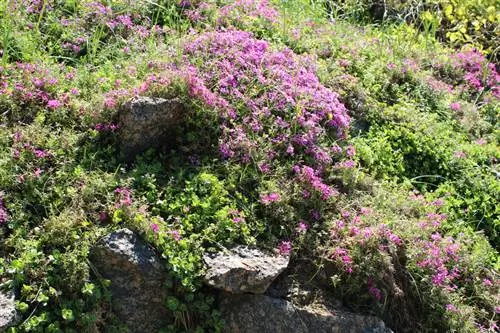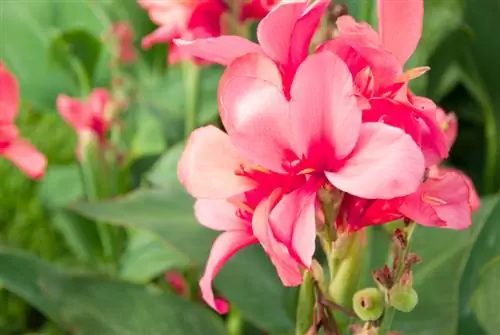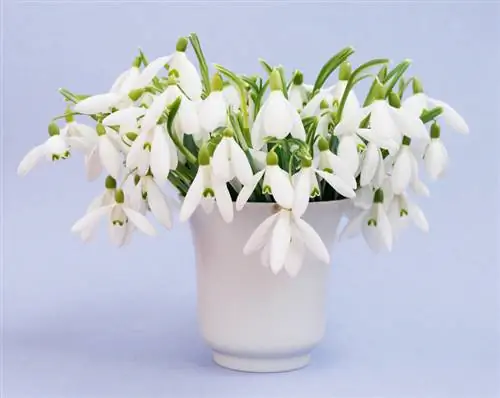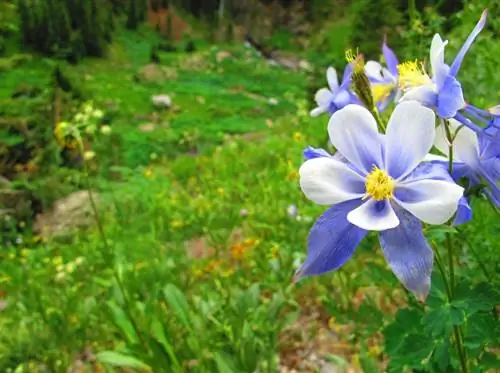- Author admin [email protected].
- Public 2023-12-16 16:46.
- Last modified 2025-01-23 11:20.
The sedum - often also referred to as sedum or stonecrop - is one of the most undemanding and robust garden perennials. The plant does not place high demands on soil or care; it even tolerates summer drought. Sedums thrive almost anywhere, provided they are planted in a sunny location. You also have little to do with regard to possible cutting measures.

How do I cut a sedum correctly?
To prune a stonecrop correctly, cut back the dried inflorescences in spring, cut autumn arrangements or propagate the plant through cuttings and offshoots. Be careful not to cut the shoots back more than 2/3 of their original length.
Cutting back stonecrop in spring
Basically, sedums do not need to be cut regularly every year, because as long as the plants feel comfortable and grow well, they only need to be pruned every few years. With this you remove unsightly or bare shoots, and you can also divide them at the same time. However, if you are bothered by the dry inflorescences from the previous year, you can of course cut them back - but only in spring, as the fat hen needs the nutrients still remaining in the old shoots as a winter supply. Pruning is best done shortly before new growth.
Cutting stonecrops for autumn arrangements
By the way, the inflorescences of the sedum can also be cut while they are still in full bloom. You can use them for colorful garden bouquets or autumnal arrangements, and the sedum also dries very well. To do this, simply hang the freshly cut shoots upside down in an airy and warm place, but not in direct sun - the beautiful flower colors will only fade there.
Cut cuttings or offshoots
Sedums can easily be propagated by cuttings or leaf cuttings, which are also cut in spring. You can also divide longer shoots into several pieces and plant them separately - Sedum forms roots very easily, although you should allow the interfaces to dry for about two to three days before planting. It is best to use a succulent substrate (€12.00 on Amazon) as growing soil, which - as is usual with vegetative propagation - should be kept moist for several weeks.
Propagate sedum hens via offshoots
Some sedum species also develop side shoots, which can be cut as offshoots from a length of around five centimeters and planted like cuttings in a succulent substrate. Both the cuttings and the cuttings can be planted outdoors immediately as soon as new roots have formed.
Tip
When pruning, make sure not to cut back the shoots more than 2/3 of their original length.






